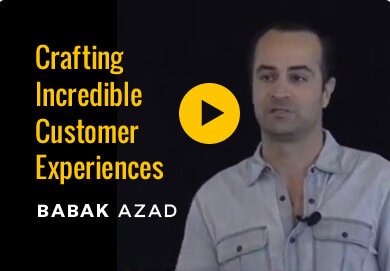
If you asked a DR marketer or a brand marketer what they think of the other, you would most likely hear about a lack of understanding of the other model, possibly even a snide or cynical view of the other.
Most DR marketers are pretty proud, borderline arrogant, about how they approach marketing – and very few truly care about building a brand; I say this not because they avoid spending money on “brand” advertising, but rather because of their business practices. More on this point in a bit.
At the same time, many brand marketers either don’t really know what DR is or describe being a DR marketer themselves, but in a way that most hard-core DR marketers would scoff at. Managing to impressions or reach is not how a pure-bred DR marketer manages their media. But a brand marketer’s emphasis on the longer-term is usually superior to that of DR marketers.
So why such a difference? Why are direct response and brand often times so much at odds with one another?
Some of it is legacy. And some is just practicality.
From a historical perspective, many DR marketers had a churn-and-burn mentality, working to extract as much money from a customer as possible, knowing full well that that customer would rarely refer the product (rarely a service) to a friend once that relationship (read: billing) had ceased. Very few DR marketers – think infomercial guys from the 90s – were interested and working towards building a business. They behaved in a way that created the stereotype about infomercials – I remember hearing about a marketer that required a return be shipped in the original packaging, despite that the packaging was designed to essentially fall apart when originally opened. That kind of practice deserved a crappy reputation. And clearly reflected a lack of concern about impact on the brand.
What DR folks have done well, however, is being laser-focused on optimizing traffic and media, and maximizing revenues and customer LTV. Especially early on in a business’ life cycle, maximizing the return on money spent is crucial.
On the other hand, traditional advertising has been focused on branding and awareness. Once TV advertising was opened up, marketers realized they could dramatically increase their reach. The mentality was more about influencing public opinion, but the need to specifically track the effectiveness of individual media wasn’t as prevalent. It’s what spurned the comment, “50% of media doesn’t work, we just don’t know which 50%.” If a DR marketer said that, they be laughed at, fired, and/or out of business pretty quickly.
Where brand marketers have been particularly good, however, has been in, well, branding – crafting a story, persona and experience around a brand. More than that, they oftentimes have a greater attention towards true customer experience and satisfaction, and all the work that goes into increasing those measures.
So which is better? And which is more relevant in different phases in a business’ evolution?
The answer to both questions is “yes”…
The value of a DR sensibility is the attention towards optimization and increasing revenues/margin. For a startup with minimal funds, it’s almost a requirement to think this way. But for a business that wants to stay around for the longer-term, it’s nearly impossible to do so with a crappy brand (though the cable companies have done so in spite of themselves, but that’s a different conversation…). People want to associate with brands. A brand is what garners a premium vs. the generic option. A brand is what helps people to choose between multiple similarly-appearing offerings.
In some ways, DR can be likened to income, while brand can be likened to wealth. One helps you generate money, the other helps you to keep and grow it.
The reality is that both models need to be considered and used by all marketers. The idea that DR is a niche business model needs to end. DR folks understand the importance of tracking and measuring as much as possible and are obsessed with ROI of any spend. At the same time, unless an organization wants to continue to reinvent itself, sometimes weekly, and just wants to live in the acquisition world, they have to understand the value of a brand – and that understanding needs to be reflected in how the company treats its customers, how much they try to “extract” from their leads and customers, and frankly, how they realize that everyone customer interaction is both an opportunity as well as recipe for disaster if mis-handled.
These are not issues to address, especially when DR can be like a drug that a marketer wants to keep peddling, while being focused on brand can be really fun when it comes to creative advertising. But branding is so much more than media and advertising. Ultimately, the brand is your consumer’s experience and perception of your business. And anyone interested in building an enterprise that lasts any remotely-extended period of time, needs to pay attention to that experience.
Marketers traditionally immersed in one need to understand how to apply the relevant component’s of the other business model. Both have significant value and need to have attention placed towards them.
You don’t generate wealth without an income. And unless you pay attention to what you do with your income, you don’t build wealth.
And that is why it shouldn’t be a conundrum, but rather a matter of figuring out how both DR and brand fundamentals are relevant to your business.
Please leave a comment below because I’d like to hear what you think.






Leave a Reply
You must be logged in to post a comment.